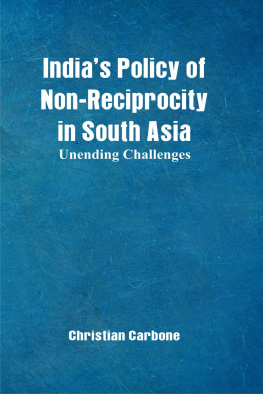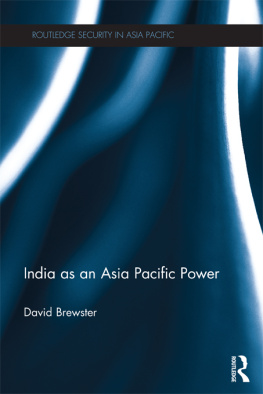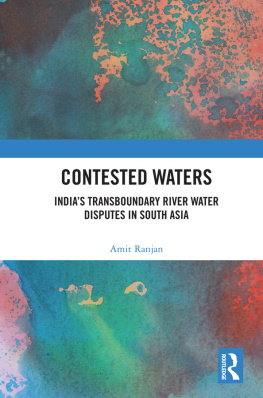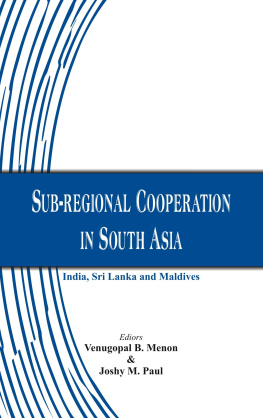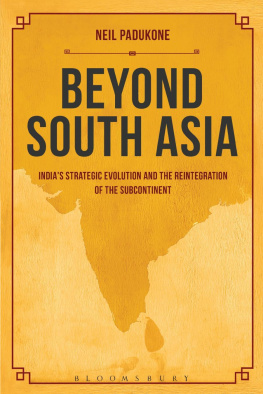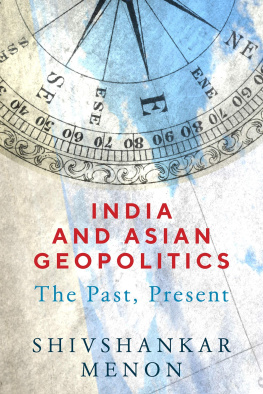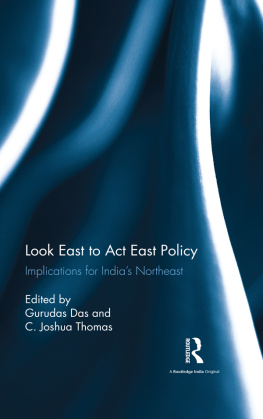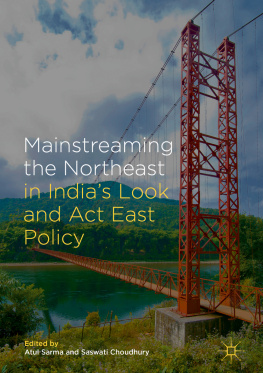Copyright 2018
ISBN : 9789352978625
Design and Setting by
Alpha Editions
(A Vij Publishing Group Company)
www.vijbooks.com
email
All rights reserved. No part of this publication may be reproduced,
distributed, or transmitted in any form or by means, including
photocopying, recording, or other electronic or mechanical methods,
without the prior written permission of the publisher.
The views and characters expressed in the book are of the author and
his/her imagination and do not represent the views of the Publisher.
India is often perceived as a regional power, but a closer look reveals that it is in a disadvantageous position vis--vis China in South Asia. The first reason is that Indian governments never had the political, economic, and military capacities to pursue their regional power ambitions with their neighbours in the long run. South Asian countries could always play the China card in order to evade Indias influence. Second, Indias new South Asia policy with the focus on trade and connectivity has improved regional cooperation since 1991. But China remains an economically more attractive and politically more reliable partner for Indias neighbours.
Indias South Asia policy, if it wants to induce bandwagoning toward itself, has to take into consideration the security sensitivities of Pakistan as well as its deterrent capability, and the sensitivities of Indias smaller neighbors on a range of issues including feared loss of sovereignty and distinctness of their identity. It has to combine incentives such as non-reciprocal trade openness with reassurances on vital threat perception issues including military posture, as well as treatment of its Muslim and other minorities. This would be a vital factor in the threat perceptions of Pakistan and Bangladesh; India should lead but not be domineering. Good precedents are the revision of the Indo-Bhutan Treaty in 2007 to remove obsolete provisions and the agreement to consider amending the Indo-Nepal Treaty of 1950, both of which were desired by the smaller country. While the ideal way towards regional integration would be the adoption of a regime of common norms and policies, this is not feasible given that SAARC bars the discussion of domestic issues.
Despite its historical and cultural links with East and Southeast Asia, India in its post-Independence foreign policy largely tended to ignore the region. The structural constraints of the Cold War proved too formidable despite Indias geographic proximity to the East Asian region. It was the end of the Cold War that really brought East and Southeast Asia back to the forefront of Indias foreign policy horizons.
South Asia though often loosely defined comprises small island like Maldives to India a country of continental proportions. Its short six or seven decades old political and independent history has witnessed the amazing functioning of the largest democracy in India to Kingdoms in Bhutan and Nepal to political upheavals through frequent coup dtats in some countries in the group as well as resurgence of democratic communism in Nepal. Besides two of the major countries have nuclear capabilities that is further compounded by the already nuclear Chinese in the larger neighbourhood trying to keep their stilted balance by proxy through Pakistan.
This is a reference book. All the matter is just compiled and edited in nature, taken from the various sources which are in public domain.
Hopefully, the information gathered herein will prove useful to all those interested in the study.
Editor
Indias Foreign Policies in
South Asia
Indias foreign policies in recent years have made commendable progress in terms of relations with major world powers. Relations with the United States are moving towards more strategic cooperation to secure Indias national security interests.
China despite its traditional rhetoric has seen the wisdom of greater economic cooperation with India and departing from its hostility following the 1998 nuclear tests by India. European Union Countries and Russia have modulated their policies towards India to exploit the vast defence purchase market and economic opportunities that India presents. However, despite all of the above Indias foreign policies in South Asia need a drastic review.
If there is a growing recognition worldwide that India is a power to reckon with in South Asia and an emerging key player in global affairs, then India, at the first instance needs to reinforce and press home this reality in the South Asian neighbourhood. Indias failure to create this impact in South Asia arises from a combination of the following factors:
* Indias lack of political will to use her power to ensure that South Asian nations recognize Indias predominance in the Indian sub-continent and the Indian Ocean.
* Indias soft handling of Pakistans spoiler state strategies both as a hand-maiden of intrusive external powers and its attempts to provoke other South Asian nations to adopt belittling policies towards India.
* Indias inability to spell out firmly to USA and China that while they are free to follow their national interests in Pakistan, their future relationships with India would depend on their demonstrated sensitivity to Indias national interests in South Asia and that these cannot be made subservient to theirs.
India therefore has to review and modulate its policies towards South Asian countries by giving predominance to Indias strategic imperatives of creating a peaceful South Asian neighbourhood.
South Asia as a peaceful region can only emerge by strong and firm Indian policies that brook no playing around with Indias national interests.
With the above in mind, some view points are expressed below in relation to our foreign policy formulations towards the countries of the region.
Pakistan: Pakistan has emerged as a rogue nuclear state however much the United States may like to paint it white. It has proliferated uranium enrichment technology to North Korea and Iran too (estimative analysis) and thereby jeopardizing vital United States strategic interests in East Asia and the Middle East. This is taking place with the assistance of and bidding of China.
India should not therefore depend on or expect United States and China to restrain Pakistans disruptive policies in South Asia.
In relation to bringing Pakistan to heel in South Asia, Indias foreign policies concerning Pakistan must incorporate the following ingredients:
* Pakistans proxy war against India needs to be carried back into Pakistan. Self-determination movements in Sindh, Baluchistan, Pashtunistan and Northern Areas need to be exploited. Indias oft-quoted pro-active policies must be put into effect here.
* Pakistan based terrorist organizations must be struck the way the Israel strikes back at its opponents.
* Indias foreign policies and military policies lack the essential ingredient of Psychological Warfare and allied operations.
* Pakistan Armys stranglehold over the Pakistani nation-state and thwarting the emergence of democracy and pluralism in Pakistan needs to be vigorously exposed as part of the above operation.
* India must impose an arms-race on Pakistan the pace of which Pakistan can ill-afford economically and nor can its external patrons subsidise.
* In relation to Pakistan, India must make it clear to the other South Asian countries, that they have to choose between India and Pakistan in South Asia. Either you are with us, or against us and if their choice is against us they should be prepared to face the consequences of their choice.

